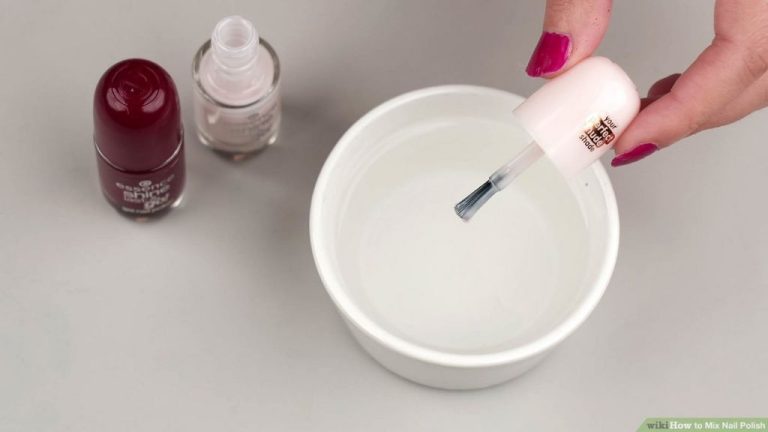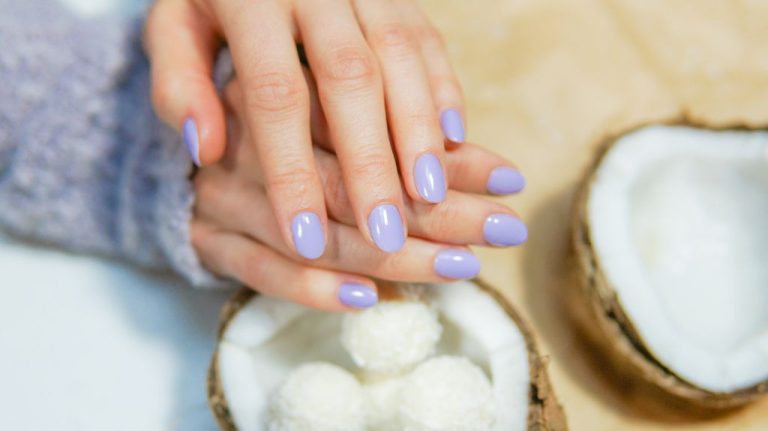Essential Diy Nail Tools For Beginners
The goal of this article is to cover the most essential DIY nail tools for beginners who want to start doing their own manicures and pedicures at home. Having the right tools and knowing how to use them properly is key to achieving salon-quality results without the hassle and expense of going to a professional. This guide will outline the basic nail tools needed to shape, buff, trim, and polish nails, as well as provide tips on how to use them. With some practice, the right techniques, and these fundamental nail tools, anyone can give themselves an expert mani/pedi from the comfort of home.
Nail Clippers
Having a high quality pair of nail clippers is essential for any DIY manicure kit. You’ll want clippers made from sturdy stainless steel that can cut through nails cleanly without cracking or splitting them. Stainless steel nail clippers stay sharp for longer than cheaper options and the construction prevents rusting. Opt for clippers with a straight edge rather than a curved edge, as the straight edge allows you to cut your nails evenly and square. The handle should fit comfortably in your hand with an easy-grip texture. Look for nail clippers designed ergonomically for ease of use. Well-constructed nail clippers with sharp blades will snip through nails smoothly and prevent painful splitting or jagged edges.
Nail File
Nail files are essential tools for shaping and smoothing nails during manicures and pedicures. The grit or coarseness of the nail file determines how much filing power it has. Coarser grits like 80 or 100 are best for shortening nails or filing off gel polish, while finer grits like 180 or 240 gently smooth nails. Common grits are:
- 80/100 grit – coarse, for shortening nails
- 150 grit – medium coarseness
- 180 grit – medium fineness
- 240 grit – fine, for final shaping
Nail file shapes include rectangle, square, round, pointed, flame/edge, and oval. Rectangle and square files allow filing at the sides or across the nail. Rounded files are best for filing the free edge of nails. Pointed files can get into corners. Flame or edge files shape around the edges. Oval files conform to the natural nail shape.
It’s best to use a finer grit file as the final step to leave nails smooth. Coarse files should only be used for major shaping. Look for high-quality files made of glass, crystal, or metal instead of cheaper cardboard files. Pick files in different grits and shapes for versatile nail care.
Cuticle Remover
Proper cuticle care is essential for healthy nails. The cuticles are the thin skin around the base of the nails that protect the nail matrix (where new nail cells grow). If cuticles are too dry or overgrown, they can tear and allow bacteria or fungi to enter and infect the nail bed. Using a cuticle remover allows you to gently push back and dissolve dead cuticle tissue without cutting or damaging live tissue.
To use a cuticle remover, first soak nails in warm water to soften the cuticles. Apply the remover and let it sit for 1-2 minutes. Then gently push back the cuticles with an orangewood stick or silicone tool, never metal tools which can damage the nail bed. Avoid cutting into live tissue. After removing dead tissue, rinse nails and apply a nourishing cuticle oil like vitamin E or jojoba oil. This helps prevent painful hangnails. For extremely overgrown cuticles, you may need to exfoliate repeatedly over time. But never rip off healthy tissue or it can lead to infection and nail damage according to dermatologists (https://www.byrdie.com/cuticle-care-at-home-6931334). With routine proper cuticle care, your nails will look tidy and healthy.
Cuticle Nippers
Cuticle nippers are an essential tool for trimming and maintaining cuticles. They are small scissors or clippers designed specifically for cutting cuticles neatly and precisely. Using cuticle nippers helps prevent tearing of the cuticle and hangnails.
Cuticle nippers should be used after soaking the nails to soften the cuticles. Gently pinch the excess cuticle with the nipper and trim just the dead cuticle, being careful not to cut any live skin. The nippers allow you to neatly trim off hangnails and loose pieces of cuticle. Using a proper cuticle nipper rather than scissors or nail clippers gives you much better control and precision when trimming cuticles.
Most manicure sets come with cuticle nippers. Look for ones with sharp, precise blades that give you optimal control. High-quality stainless steel cuticle nippers stay sharp longer. Proper cuticle maintenance with nippers keeps your cuticles tidy and healthy.
Nail Brush
A nail brush is an essential tool for keeping nails clean and removing debris from underneath the nails. According to the CDC, nails can harbor dirt and germs that can contribute to the spread of infection, so proper nail hygiene is important (CDC). Using a nail brush along with soap and water allows you to thoroughly clean underneath the nail bed and remove any germs or dirt.
Nail brushes have soft bristles that can get into the small spaces around and under the nails. The bristles scrub away debris while the soap and water lift and rinse it away. Simply using your fingers or a washcloth may not clean as effectively. The bristles are able to reach where fingers cannot.
Regular nail brushing helps prevent the buildup of germs and dirt that can lead to nail infections or nail fungus. Keeping nails clean lowers the risk of spreading illness from hand to mouth contact or from touching others. Nail brushes are an easy and inexpensive way to maintain good nail hygiene.
Base Coat
For nail polish to last and look its best, a base coat is a necessary step. Base coat provides a smooth surface for nail polish to adhere to and acts as a protective primer for your nails (Source: https://www.goodhousekeeping.com/beauty/nails/a34522/why-base-coat-is-important/). The base coat fills in any ridges or imperfections in the nail surface, creating a smooth canvas for the polish. It also helps prevent nail polish stains by creating a barrier between the pigment and your natural nails (Source: https://www.opi.com/blog/product-spotlight/5-reasons-you-should-be-using-a-base-coat). Without a base coat, nail polish adheres unevenly and stains may discolor the nails over time.
Top Coat
A top coat is an essential product for any DIY manicure. As the name suggests, top coat goes on top of your colored nail polish. Top coat has a few key benefits:
It seals in nail color and prevents chipping. By applying a layer of top coat over your polish, you create a protective barrier that helps lock in color and prevents chips and cracks. This allows your manicure to stay pristine for longer (1).
It adds shine and gloss. Most top coats contain ingredients that help create an ultra-glossy, glass-like finish. This amplifies the lacquered effect of your polish and makes colors appear more vibrant and luminous (2).
It helps dry polish faster. Many top coats are formulated with quick-drying ingredients like acrylics. This speeds up drying time and lets you get on with your day faster after painting your nails.
When shopping for a top coat, look for one that dries quickly, resists smudging, helps prevent chipping and fading, and leaves a smooth, glossy finish. Apply it as the last step of your manicure for extended wear and fabulous nails.
(1) https://orlybeauty.com/blogs/news/difference-between-base-coat-and-top-coat-nail-polish
(2) https://thenailbar.com.au/blogs/news/everything-you-need-to-know-about-base-coat-top-coat
Cuticle Oil
Cuticle oil is an essential product for nails because it hydrates and conditions the cuticles to prevent peeling, cracking and hangnails. According to this article, regular application of cuticle oil softens cuticles, promotes nail growth, prevents breakage, and lengthens the life of nail polish. The nourishing oils sink into the nail bed and stimulate circulation to encourage healthy new nail growth.
Cuticle oil is typically formulated with natural oils like jojoba, vitamin E, and essential oils. These oils moisturize and hydrate the cuticles and nails. As explained in this Healthline article, massaging cuticle oil into the nail and cuticle area increases circulation which stimulates nail growth. The oil also protects the nail and cuticle from splitting and damage.
When shopping for a cuticle oil, look for one rich in hydrating oils like jojoba, olive, coconut or almond. Apply it to clean nails and cuticles 1-2 times per day or as needed. Gently push back the cuticles and massage the oil into the nail bed and surrounding skin. This conditioning treatment will lead to healthy, hydrated nails and cuticles.
Conclusion
When starting out with DIY nails, it’s important to begin with the essentials. The basic tools covered in this article, like nail clippers, files, cuticle removers, nippers, brushes, base coats, and top coats, provide a solid foundation for any beginner. While elaborate nail art requires advanced supplies and techniques, mastering the fundamentals allows you to keep your nails looking neat and well-groomed. Don’t get overwhelmed trying elaborate nail designs as a novice – start simple with a tidy manicure using quality core tools. As you gain confidence in basic nail care, you can gradually add more colors, patterns, and accessories. But remember, the essentials come first. Master clippers and files before decals and rhinestones. Starting with the basics helps build a strong base for your nail care routine.




